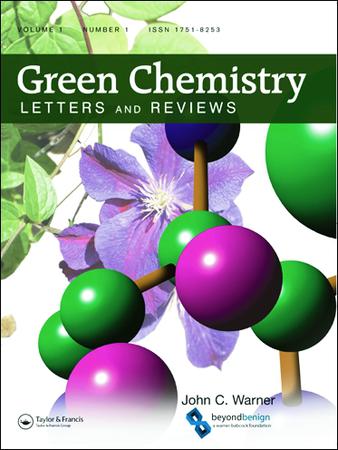利用合作项目实验和案例研究,将绿色化学纳入本科有机实验室
IF 5.8
3区 化学
Q1 CHEMISTRY, MULTIDISCIPLINARY
引用次数: 0
摘要
本文章由计算机程序翻译,如有差异,请以英文原文为准。
Incorporation of green chemistry into undergraduate organic laboratory using cooperative project-based experiments and case studies
ABSTRACT The large-enrollment undergraduate organic chemistry laboratories at Michigan State University have been redesigned to incorporate green and sustainable chemistry and evidence-based instructional approaches to laboratory teaching. Students engage in scientific practices such as defining problems, designing and carrying out experiments, analyzing data, and designing solutions during in-person lab sessions. Principles of green and sustainable chemistry are introduced in the case studies, where students investigate a variety of approaches and discuss the relative merits of different approaches from a range of perspectives including efficiency, environmental impact, and cost. An in-depth summary of design pedagogy, instructional materials, implementation details, instructor’s notes and challenges will be discussed. GRAPHICAL ABSTRACT
求助全文
通过发布文献求助,成功后即可免费获取论文全文。
去求助
来源期刊

Green Chemistry Letters and Reviews
CHEMISTRY, MULTIDISCIPLINARY-GREEN & SUSTAINABLE SCIENCE & TECHNOLOGY
CiteScore
9.10
自引率
3.00%
发文量
48
期刊介绍:
Green Chemistry Letters and Reviews is an Open Access, peer-reviewed journal focused on rapid publication of innovative new syntheses and procedures that reduce or eliminate the use and generation of hazardous materials. Reviews of state-of-the-art green chemistry technologies are also included within the journal''s scope.
Green Chemistry Letters and Reviews is divided into three overlapping topic areas: research, education, and industrial implementation. The journal publishes both letters, which concisely communicate the most time-sensitive results, and reviews, which aid researchers in understanding the state of science on important green chemistry topics. Submissions are encouraged which apply the 12 principles of green chemistry to:
-Green Chemistry Education-
Synthetic Reaction Pathways-
Research and Process Analytical Techniques-
Separation and Purification Technologies-
Renewable Feedstocks-
Degradable Products
 求助内容:
求助内容: 应助结果提醒方式:
应助结果提醒方式:


